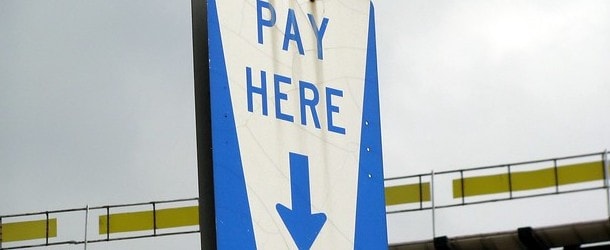There’s been a lot of buzz about a possible 50-year mortgage after President Trump teased it over the weekend on his Truth Social platform.
Of course, anyone who knows anything about mortgages knows it’s not going to happen. Sorry folks!
But in the meantime, we can all talk about it and learn something along the way.
One thing I want to point out is that you pay a premium for a longer-term mortgage.
For example, 30-year fixed mortgages are more expensive (rate-wise) than 15-year fixed mortgages because you get double the amount of time to pay it off.
Your Mortgage Rate Will Be Higher If You Take Out a 50-Year Fixed
As noted, the longer the loan term, the higher the mortgage rate, all else equal.
This is why the 15-year fixed is cheaper than the 30-year fixed, and why the 10-year fixed is even cheaper than the 15-year.
The more time you get, the higher the rate. It’s logical. Banks are taking a risk by giving you a loan for a longer period of time and want to be compensated.
That compensation is achieved with more interest paid out via both the higher interest rate and longer loan term.
So when I see all the layman folks comparing the 30-year fixed to the 50-year fixed, they’re making a big mistake.
They are inputting the same mortgage rate and then comparing the products side by side.
In reality, the 50-year fixed might come with an interest rate that is a full half-percent higher than the 30-year fixed.
As such, the math changes pretty significantly and reduces the effectiveness of the longer loan term.
50-Year Mortgages Barely Lower the Monthly Payment
The whole point of a longer-term mortgage is to achieve a lower monthly payment.
But if the rate is markedly higher, you might not even save much. And as many have pointed out, you’ll pay a lot more interest.
So if you get no benefit payment-wise, while also paying the double the interest, what’s the point?
Well, this is exactly WHY these types of mortgages aren’t offered. And why loan terms beyond 30 years were specifically excluded from the Qualified Mortgage (QM) rule post-GFC.
Lawmakers knew these loans weren’t helpful and in fact harmful to homeowners, so they essentially banned them.
This is why you rarely you even see even a 40-year fixed mortgage because they just don’t move the dial on payment much and they cost the homeowner a lot more.
Not to mention the extra decade it takes to pay the thing off!
You Could Just Buy Down the Rate on a 30-Year Fixed Instead
Now let’s do the math to illustrate why these loans are useless and how you could achieve the same savings simply by buying down your mortgage rate.
I said mortgage rates are higher on longer-term loans, so a 50-year fixed mortgage (if it existed) would likely have a rate 0.50% higher than a comparable 30-year loan.
So let’s pretend a lender offered one and you needed a $400,000 loan. The 30-year fixed is currently priced at about 6.375%. That would make a 50-year fixed 6.875%, or perhaps even 7%.
With it being a new product and higher-risk, lenders might price them even more conservatively, meaning 7% wouldn’t be out of the question.
Meanwhile, a lender is offering a 6% 30-year fixed if you pay a fraction of a mortgage discount point at closing.
Let’s call it 0.625% points to get your rate down below-market to 6% instead of 6.375%.
We are now comparing a 6% 30-year fixed to a 7% 50-year fixed. Sorry folks, you don’t get the same rate!
Guess what happens. Well, the monthly payment becomes cheaper on the 30-year loan.
- A 30-year fixed set at 6% is $2,398.20 per month
- A 50-year fixed set at 7% is $2,406.75 per month
It’s actually about $9 cheaper per month to just go with the 30-year fixed.
Meanwhile, you would pay $1,044,050.00 in interest over a 50-year loan term versus just $463,352.00 with a 30-year fixed.
For an upfront cost of $2,500 you could obtain the 6% rate instead of the 7% rate, get a lower monthly payment, and pay nearly $600,000 less in interest.
What’s more, that cost could be absorbed by a builder or home seller via seller concessions, so you wouldn’t even need to pay it out of pocket.
This illustrates why a 50-year fixed mortgage is completely unnecessary and would do nothing to help prospective home buyers achieve the American Dream.

